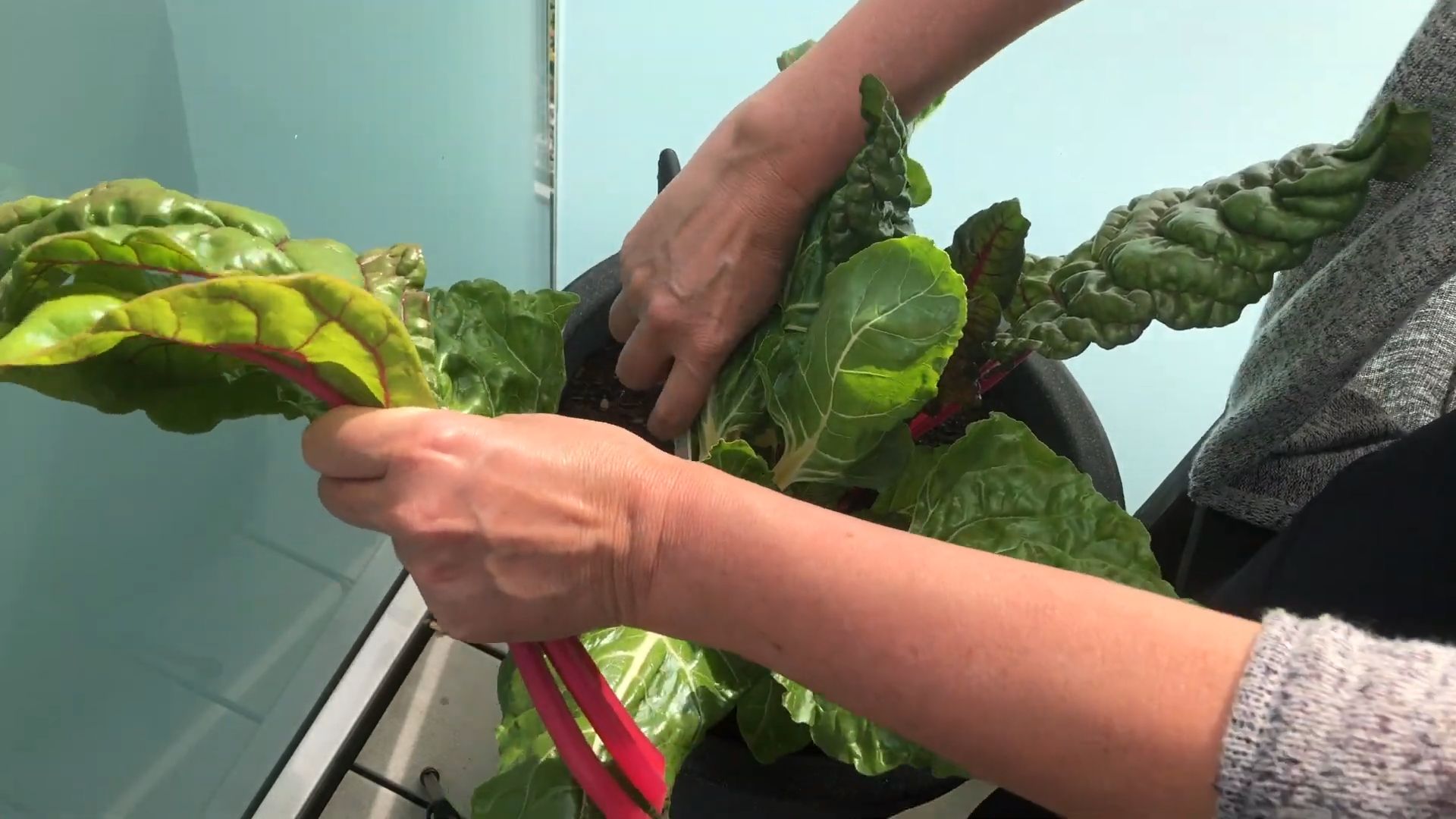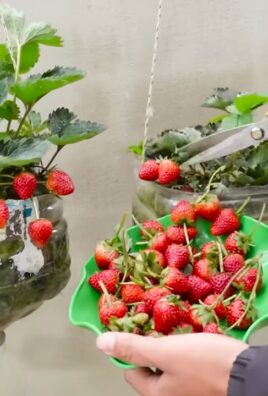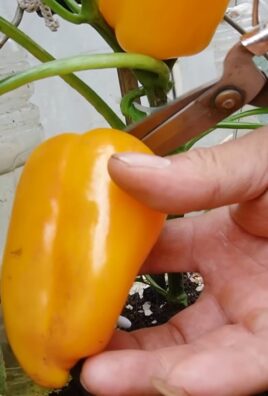Grow Chard Indoors Easy Guide: Your Path to Fresh, Vibrant Greens Year-Round!
Have you ever dreamt of snipping fresh, colorful chard leaves right from your kitchen, even when the snow is falling outside? I know I have! The good news is, it’s totally achievable. This DIY guide will unlock the secrets to successfully grow chard indoors, bringing a burst of healthy goodness and vibrant color to your home.
Chard, with its striking rainbow stems and nutrient-packed leaves, has been a culinary staple for centuries, tracing its roots back to the Mediterranean. Historically, it was prized for its resilience and nutritional value, providing essential vitamins and minerals, especially during leaner months. Today, we can enjoy this superfood year-round, and what better way than to grow chard indoors ourselves?
Let’s face it, store-bought produce can sometimes lack that fresh, vibrant flavor and can be expensive. Plus, knowing exactly where your food comes from and how it’s grown is incredibly satisfying. This easy guide provides simple, step-by-step instructions, even if you’re a complete beginner. I’ll show you how to choose the right containers, provide the perfect lighting, and care for your chard plants so you can enjoy a continuous harvest of delicious, healthy greens. Get ready to transform your windowsill into a mini-garden and enjoy the rewards of fresh, homegrown chard!

Growing Chard Indoors: A Beginner’s Guide
Hey there, fellow plant enthusiasts! Ever thought about growing your own vibrant, nutritious chard right inside your home? It’s easier than you might think, and I’m here to guide you through every step. Chard is a fantastic leafy green, packed with vitamins and minerals, and it adds a beautiful splash of color to any dish. Plus, growing it indoors means you can enjoy fresh chard year-round, regardless of the weather outside. Let’s get started!
Choosing the Right Chard Variety
First things first, let’s talk about chard varieties. While all chard is delicious and nutritious, some varieties are better suited for indoor growing than others.
* ‘Bright Lights’: This is a popular choice for its stunning rainbow of colors – red, yellow, orange, pink, and white stems. It’s also relatively compact, making it ideal for containers.
* ‘Fordhook Giant’: As the name suggests, this variety produces large, dark green leaves. It’s a reliable and productive choice, but it might require a slightly larger pot.
* ‘Lucullus’: This variety has crinkled, light green leaves and a mild flavor. It’s a good option if you prefer a more delicate taste.
I personally love ‘Bright Lights’ because it adds so much visual appeal to my indoor garden. But feel free to experiment and find the variety that you enjoy the most!
Gathering Your Supplies
Before we dive into the planting process, let’s make sure you have everything you need. Here’s a checklist:
* Chard Seeds: Choose your favorite variety from the options above.
* Containers: Opt for pots that are at least 6-8 inches deep and wide. Good drainage is crucial, so make sure your pots have drainage holes.
* Potting Mix: Use a high-quality, well-draining potting mix. Avoid using garden soil, as it can become compacted and doesn’t drain well in containers.
* Grow Lights (Optional but Recommended): While chard can tolerate some shade, it thrives with plenty of light. If you don’t have a sunny windowsill, grow lights will provide the necessary illumination.
* Watering Can or Spray Bottle: For gentle watering.
* Fertilizer (Optional): A balanced liquid fertilizer can help boost growth.
* Seed Starting Tray (Optional): If you prefer to start your seeds indoors before transplanting.
Planting Your Chard Seeds
Now for the fun part – planting! Here’s a step-by-step guide to get your chard seeds started:
1. Prepare Your Containers: Fill your pots with potting mix, leaving about an inch of space at the top. Gently pat down the soil to remove any air pockets.
2. Sow the Seeds: Sow the chard seeds about ½ inch deep and 1-2 inches apart. You can plant multiple seeds per pot, but be prepared to thin them out later if they all germinate.
3. Water Gently: Water the soil thoroughly but gently, using a watering can or spray bottle. Avoid overwatering, as this can lead to seed rot.
4. Provide Light: Place your pots in a sunny windowsill that receives at least 6 hours of direct sunlight per day. If you’re using grow lights, position them a few inches above the soil surface and keep them on for 12-14 hours per day.
5. Maintain Moisture: Keep the soil consistently moist but not soggy. Check the soil moisture regularly by sticking your finger into the soil. If the top inch feels dry, it’s time to water.
6. Wait for Germination: Chard seeds typically germinate within 5-10 days. Be patient and keep the soil moist.
Thinning Seedlings (If Necessary)
Once your seedlings have emerged, you might need to thin them out if you planted multiple seeds per pot. This will give the remaining seedlings enough space to grow and thrive.
1. Identify the Strongest Seedlings: Choose the seedlings that look the healthiest and most vigorous.
2. Remove the Weaker Seedlings: Gently snip off the weaker seedlings at the soil line using scissors or your fingers. Avoid pulling them out, as this can disturb the roots of the remaining seedlings.
3. Space the Seedlings: Aim for a spacing of about 4-6 inches between seedlings.
Caring for Your Indoor Chard
Now that your chard seedlings are growing, it’s important to provide them with the right care to ensure a bountiful harvest.
1. Watering: Water your chard regularly, keeping the soil consistently moist but not soggy. Avoid overwatering, as this can lead to root rot. The frequency of watering will depend on the temperature, humidity, and pot size.
2. Lighting: Chard needs plenty of light to thrive. If you’re growing your chard in a sunny windowsill, rotate the pots regularly to ensure that all sides of the plants receive equal sunlight. If you’re using grow lights, keep them on for 12-14 hours per day.
3. Fertilizing (Optional): If you want to give your chard a boost, you can fertilize it every 2-3 weeks with a balanced liquid fertilizer. Follow the instructions on the fertilizer label.
4. Temperature: Chard prefers temperatures between 60-75°F (15-24°C). Avoid exposing your plants to extreme temperatures.
5. Humidity: Chard prefers moderate humidity. If the air in your home is dry, you can increase the humidity by placing a tray of water near your plants or using a humidifier.
6. Pest Control: Keep an eye out for pests such as aphids, spider mites, and whiteflies. If you notice any pests, you can try spraying your plants with insecticidal soap or neem oil.
7. Air Circulation: Good air circulation helps prevent fungal diseases. Make sure your plants have plenty of space around them and that the air is circulating freely. A small fan can help.
Harvesting Your Chard
The best part of growing your own chard is, of course, harvesting it! You can start harvesting your chard leaves when they are about 6-8 inches long.
1. Harvest Outer Leaves: Harvest the outer leaves first, leaving the inner leaves to continue growing. This will allow you to harvest your chard continuously for several weeks.
2. Cut or Snap the Leaves: You can either cut the leaves off with a knife or scissors, or you can simply snap them off with your fingers.
3. Wash and Enjoy: Wash the harvested leaves thoroughly before using them in your favorite recipes.
Troubleshooting Common Problems
Even with the best care, you might encounter some problems while growing chard indoors. Here are some common issues and how to address them:
* Yellowing Leaves: This can be caused by overwatering, underwatering, nutrient deficiencies, or pests. Check the soil moisture, fertilize if necessary, and inspect your plants for pests.
* Leggy Growth: This is usually caused by insufficient light. Provide more light by moving your plants to a sunnier location or using grow lights.
* Slow Growth: This can be caused by a variety of factors, including poor soil, insufficient light, or nutrient deficiencies. Make sure your plants have well-draining soil, plenty of light, and adequate nutrients.
* Pest Infestations: Inspect your plants regularly for pests and take action immediately if you notice any. Insecticidal soap and neem oil are effective treatments for many common pests.
Enjoying Your Homegrown Chard
Now that you’ve harvested your delicious, homegrown chard, it’s time to enjoy it! Chard is a versatile vegetable that can be used in a variety of dishes. Here are some ideas:
* Sautéed Chard: Sauté chard with garlic, olive oil, and a pinch of salt and pepper for a simple and healthy side dish.
* Chard in Soups and Stews: Add chopped chard to soups and stews for extra flavor and nutrients.
* Chard in Salads: Use young, tender chard leaves in salads for a pop of color and flavor.
* Chard in Frittatas and Omelets: Add chopped chard to frittatas and omelets for a healthy and delicious breakfast or brunch.
* Chard in Smoothies: Blend chard into smoothies for a nutrient-packed boost.
I hope this guide has inspired you to grow your own chard indoors. It’s a rewarding experience that will provide you with fresh, healthy greens all year round. Happy gardening!

Conclusion
So, there you have it! Growing chard indoors is not only achievable but also incredibly rewarding. This DIY trick transforms your windowsill or spare room into a miniature, vibrant garden, providing you with a constant supply of fresh, nutritious greens right at your fingertips. Forget those wilted, overpriced bunches at the grocery store; with a little effort and this simple guide, you can enjoy the crisp, earthy flavor of homegrown chard whenever you desire.
Why is this a must-try? Because it’s more than just a way to get fresh vegetables. It’s a connection to nature, a therapeutic activity, and a sustainable practice all rolled into one. Imagine the satisfaction of harvesting leaves you nurtured from tiny seeds, knowing exactly where they came from and what went into their growth. Plus, it’s a fantastic way to reduce your carbon footprint and contribute to a more eco-friendly lifestyle.
But the beauty of growing chard indoors lies in its versatility. Feel free to experiment with different varieties. Rainbow chard, with its vibrant stems of red, yellow, and orange, adds a splash of color to your indoor garden and your plate. Or try Fordhook Giant for larger, more substantial leaves. You can also adjust the growing medium to suit your preferences. While a standard potting mix works well, consider adding compost or worm castings for an extra boost of nutrients.
Don’t be afraid to get creative with your setup, too. If you’re short on space, vertical planters or hanging baskets can be excellent options. And if you want to take your indoor gardening to the next level, consider investing in a grow light to supplement natural sunlight, especially during the darker winter months.
Ready to embark on your indoor chard-growing adventure? We encourage you to give this DIY trick a try. It’s easier than you think, and the rewards are well worth the effort. Once you’ve harvested your first batch of homegrown chard, you’ll be hooked!
And remember, the journey doesn’t end here. We’d love to hear about your experiences. Share your tips, tricks, and photos in the comments below. Let’s build a community of indoor chard enthusiasts and learn from each other. What varieties did you try? What challenges did you face? What successes did you celebrate? Your insights can help others discover the joy of growing their own food indoors. So, get planting, get sharing, and get ready to enjoy the delicious taste of homegrown chard! This easy guide to growing chard indoors is your first step to a healthier and more sustainable lifestyle.
Frequently Asked Questions (FAQ)
Q: How much sunlight does indoor chard need?
A: Chard thrives in bright light, requiring at least 6 hours of direct sunlight per day. If you don’t have a sunny windowsill, consider using a grow light to supplement natural light. A fluorescent or LED grow light placed a few inches above the plants can provide the necessary illumination. Rotate your chard plants regularly to ensure even light exposure on all sides. If the leaves start to look pale or leggy, it’s a sign that they’re not getting enough light.
Q: What is the best type of container for growing chard indoors?
A: Choose a container that is at least 6-8 inches deep and wide to allow sufficient room for the roots to grow. A pot with drainage holes is essential to prevent waterlogging, which can lead to root rot. Terracotta pots are a good option as they allow for better air circulation, but plastic pots retain moisture better and may require less frequent watering. You can also use recycled containers, such as plastic tubs or buckets, as long as they are clean and have drainage holes.
Q: How often should I water my indoor chard plants?
A: Water your chard plants when the top inch of soil feels dry to the touch. Avoid overwatering, as this can lead to root rot. Water thoroughly until water drains out of the drainage holes. During warmer months, you may need to water more frequently. Check the soil moisture regularly and adjust your watering schedule accordingly. Using a moisture meter can help you determine the moisture level of the soil accurately.
Q: What type of soil is best for growing chard indoors?
A: A well-draining potting mix is ideal for growing chard indoors. You can use a commercially available potting mix or create your own by mixing equal parts of peat moss, perlite, and vermiculite. Adding compost or worm castings to the mix will provide extra nutrients for your plants. Avoid using garden soil, as it can be too heavy and may contain pests or diseases.
Q: How often should I fertilize my indoor chard plants?
A: Fertilize your chard plants every 2-3 weeks with a balanced liquid fertilizer diluted to half strength. Look for a fertilizer with an NPK ratio of around 10-10-10. You can also use organic fertilizers, such as fish emulsion or seaweed extract. Avoid over-fertilizing, as this can burn the roots and damage the plants.
Q: When can I harvest my indoor chard?
A: You can start harvesting chard leaves when they are about 6 inches long. Harvest the outer leaves first, leaving the inner leaves to continue growing. This will encourage the plant to produce more leaves. You can harvest chard leaves continuously throughout the growing season.
Q: What pests and diseases affect indoor chard?
A: Common pests that can affect indoor chard include aphids, spider mites, and whiteflies. Check your plants regularly for signs of infestation and treat them promptly with insecticidal soap or neem oil. Diseases that can affect indoor chard include powdery mildew and root rot. Ensure good air circulation and avoid overwatering to prevent these diseases.
Q: Can I grow chard indoors year-round?
A: Yes, you can grow chard indoors year-round, provided you provide adequate light and temperature. During the winter months, you may need to supplement natural light with a grow light. Maintain a consistent temperature of around 60-70°F (15-21°C) for optimal growth.
Q: How do I prevent my indoor chard from bolting (going to seed)?
A: Bolting is triggered by high temperatures and long days. To prevent bolting, keep your chard plants in a cool location and provide shade during the hottest part of the day. You can also harvest the leaves regularly to encourage the plant to focus on leaf production rather than seed production.
Q: Can I eat the stems of chard?
A: Yes, the stems of chard are edible and can be cooked in the same way as the leaves. They have a slightly different texture and flavor than the leaves, but they are equally nutritious. Rainbow chard stems are particularly colorful and add visual appeal to dishes.




Leave a Comment